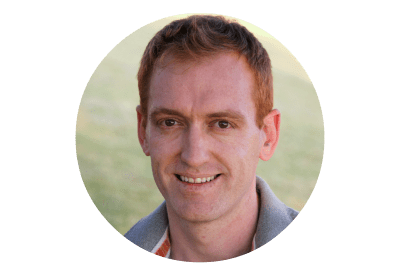NMN and NAD are not the same with people taking NMN supplements to help try raise NAD+ levels in their bodies for longevity and other health reasons. You will get to find out more on what are the key differences between these two popular substances in the anti-aging community.
Key Takeaways
- NMN is a precursor to making NAD
- NAD is an essential cofactor involved in many cellular processes, including energy metabolism and DNA repair
- The goal of taking NMN is to help make more NAD
- You can orally supplement with either NMN or NAD, but NMN supplements are thought to have better bioavailability
- You can get NAD IV Therapy, but not an NMN option
- Every cell in your body contains NAD+, but as we age, our levels naturally decline
NAD VS NMN
| Substance | NMN (Nicotinamide Mononucleotide) | NAD (Nicotinamide Adenine Dinucleotide) |
|---|---|---|
| Role | NMN is a precursor of NAD and aids in its synthesis in the body. | NAD is a coenzyme that plays a crucial role in various cellular processes, such as energy metabolism and DNA repair. |
| Supplementation | Supplementing with NMN can help increase NAD levels in the body, potentially resulting in various health benefits. | Direct NAD supplementation is less effective due to its large size, which makes it difficult for the molecule to enter cells. |
| Anti-Aging Benefits | Studies suggest that NMN supplementation may have anti-aging effects by increasing NAD levels and supporting cellular health. | Increased NAD levels, through NMN supplementation, could potentially slow down the aging process and improve overall health. |
| First Discovered | NMN was first described in 1963 by Chambon, Weill, and Mandel | NAD was first described in 1906 by Harden, and Young |
NAD Key Points
What is NAD?
NAD stands for nicotinamide adenine dinucleotide and is a collective term for the different forms NAD, like NAD+, NADH and NADP which are know as the redox couples.
Why Is NAD Important?
NAD+ is one of the most abundant molecules in the human body, besides water and would cause an organism to die if the organism stopped producing the molecule. It is required for approximately 500 different enzymatic reactions and present at about three grams in the average person.
NAD is an essential coenzyme that works in our mitochondria to help make ATP as part of our energy production and cellular functions, but NAD levels decline as we age.
NAD+ is popular within the medical community both for its potential metabolic and anti-aging properties. NAD treatment programs using intravenous NAD are used to help restore healthy cellular function and used in recovery for both physical and mental health conditions like substance use disorders (a.k.a addictions).
Scientists believe its functions are linked to the aging process and that a decline in NAD levels can be the reason our bodies age over time.
It is also used by many proteins throughout the body, such as the sirtuins (longevity genes), which repair damaged DNA (NAD+ helps control DNA damage, which is related to aging and overall health).
NMN Key Points
What is NMN?
NMN stands for nicotinamide mononucleotide and is a precursor molecule in the biosynthesis of NAD+.
β-nicotinamide mononucleotide (NMN) is an intermediate in NAD+ biosynthesis produced from
nicotinamide (NAM) and phosphoribosyl pyrophosphate (PRPP) by nicotinamide phosphoribosyltransferase (NAMPT) enzyme.
Why Is NMN Important?
NMN is produced from Vitamin B3 (a.k.a Niacin) within the body and is not a vitamin itself, but is a naturally occurring molecule in all life forms.
NMN at the chemical level, is a ribonucleotide or a basic structural unit of nucleic acid RNA. It is structurally composed of a nicotinamide group, a ribose, and a phosphate group.
The enzyme that is actually responsible for making NMN in the body is called nicotinamide phosphoribosyltransferase (NAMPT).
‘NAMPT’ is the rate-limiting enzyme in the production of NAD+. This means lower levels of NAMPT cause decreased NMN production, resulting in decreased NAD+ levels. Adding precursor molecules like NMN can also speed up NAD+ production.
NMN is involved in one of the final biochemical steps of NAD+ synthesis which is why it is called a NAD precursor.
It is one of the body’s smaller precursors responsible for producing NAD+. Precursors are like raw materials needed for NAD+ production in the body.
Other forms of Vitamin B3 that are precursors to NAD+ include: tryptophan, nicotinamide (NAM), nicotinic acid (NA), nicotinamide riboside (NR), and nicotinamide mononucleotide (NMN). All of these precursors can be obtained naturally from eating specific foods.
Which One is Better: NMN or NAD?
Being able to have sufficient or help in raising NAD levels is what the ultimate goal is for most people. Taking NMN supplements vs NAD supplements is thought to be better for more bioavailability and ability to raise NAD levels. But, you can take NAD IV therapy whereas there is not that option for NMN.
Frequently Asked Questions
How Can I Get NMN and NAD Naturally?
You can get NMN and NAD naturally by eating foods like beef, green vegetables, and cremini mushrooms that contain NAD and NMN.
Is NAD+ the Same As NMN?
No, NAD+ can be made from NMN but the reverse does not happen.
What is the Best Alternative to NMN?
Nicotinamide Riboside (NR) which is another NAD precursors would be the best alternative to NMN.
Can You Test Your NMN or NAD Levels?
You can test your NAD levels but you cannot test your NMN levels.
Sources
- Poljsak et al. 2018. Vitamin B3 forms as precursors to NAD+: Are they safe?
- Rajman et al. 2018. Therapeutic potential of NAD-boosting molecules: the in vivo evidence
- Xiao et al. 2018. NAD(H) and NADP(H) Redox Couples and Cellular Energy Metabolism
- Yaku et al. 2019. Metabolism and biochemical properties of nicotinamide adenine dinucleotide (NAD) analogs, nicotinamide guanine dinucleotide (NGD) and nicotinamide hypoxanthine dinucleotide (NHD)

